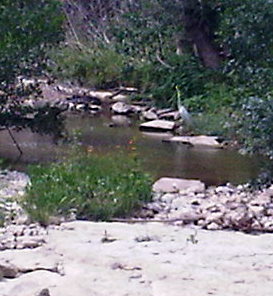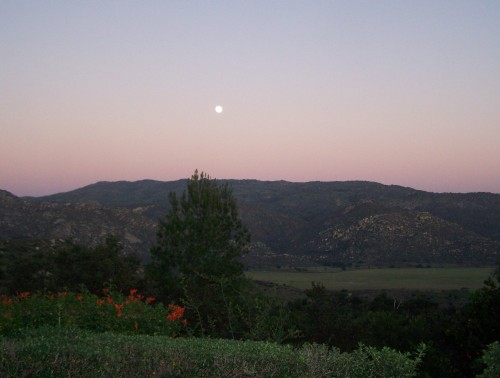Like a great many locations of note to the tumultuous years of the Republic of Texas, the site of the battle of Salado Creek doesn’t look today much like it did in 1842 . . . however, it is not so much changed that it is hard to picture in the minds’ eye what it would have looked like then. The creek is dryer and seasonal, more dependant now upon rainfall than the massive amount of water drawn into the aquifer by the limestone sponge of the Hill Country, to the north. Then – before the aquifer was tapped and drilled and drained in a thousand places – the water came up in spectacular natural fountains in many places below the Balcones Escarpment. The Salado was a substantial landmark in the countryside north of San Antonio, a deep and regular torrent, running between steep banks lined with oak and pecan trees, thickly quilted with deep brush and the banks scored by shallow ravines that ran down to water-level. Otherwise, the countryside around was gently rolling grasslands, dotted with more stands of oak trees. There was a low hill a little east of the creek, with a house built on the heights. Perhaps it might have had a view of San Antonio de Bexar, seven miles away to the south and west.
Month: April 2012
Looks Interesting
Nick Schulz interviews Jim Manzi about Manzi’s forthcoming book Uncontrolled: The Surprising Payoff of Trial-and-Error for Business, Politics, and Society. Excerpt from the interview:
We are all, to some extent, the prisoners of our experience. Like everyone, my experiences have surely created numerous biases to which, by definition, I am blind. But I have drawn some conscious lessons from my various jobs. Mostly, I suppose they relate to humility about how much harder it is to get anything done out there in the world than it seems like it ought to be when you read about it in a book or discuss it in a conference room.
A good example is that I think that most mainstream economists radically underestimate the importance in any business of what in another context Carl von Clausewitz called “friction.” Headquarters rarely knows what is going on in the field; people in frontline positions have little idea of the big picture, and react to local conditions as best they can; entrepreneurs are mostly making it up as they go, and so on. Economists are of course aware of this issue conceptually, but their attempts to incorporate it into their models of the firm and the economy are inadequate in the extreme. As compared to mainstream economic doctrine, therefore, I believe that uncertainty plays a far bigger role in real world decision-making, that quantitative models of the economy are less useful as guides to action, and that trial-and-error learning as embodied in existing institutions and practices is more important.
(via Grim’s Hall)
Grasshoppers and Frost

On September 22, 1859, Edmund Rees, wife Margaret, and the five Rees children (ages 12-18 months) arrived in Great Salt Lake City, the twelve-year old capital of the nine-year old Utah Territory. Edmund and Margaret were natives of Monmouthshire in the southeastern corner of Wales. While they’d both joined the Church of Jesus Christ of Latter-day Saints in the early 1850s, they didn’t gather to Zion and emigrate to Utah until Edmund developed asthma after years spent cutting coal in the Monmouthshire mines that fueled the early Industrial Revolution.
The Rees family started their journey with $500, the results of selling their home. $100 got them from Wales to Iowa: they left the old country on April 11, 1859, sailed across the Atlantic on the John Talbot, landed at New Orleans, and sailed up the Mississippi and Missouri Rivers to Council Bluffs, Iowa by steam boat. Another $100 got them two oxen, a covered wagon, a milk cow, and safely across the Plains to Utah.
Edmund was unfamiliar with handling livestock: the first time he put the yoke on the oxen, he put it on upside down.
So Margaret took over.



